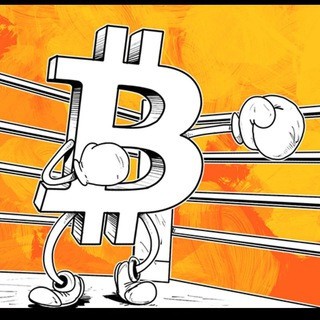Back
Markets
Aug 9, 2023
Will PayPal's New Stablecoin Sink or Swim?

Bitcoin Macro

Global payments giant PayPal is releasing a stablecoin–what does this mean for users and markets?
hashtag#PayPal announced the launch of its own hashtag#stablecoin, PayPal USD (PYUSD), marking the company's first major foray into the cryptocurrency space. So far, the company had only allowed some of its customers to trade, hold and transfer specific cryptocurrencies like Bitcoin, Ether, Bitcoin Cash and Litecoin, with its crypto holdings being worth around $1 billion USD.
The stablecoin will be pegged 1:1 to the U.S. hashtag#dollar and issued by hashtag#Paxos Trust Company, a regulated crypto financial services firm. It will be available on the Ethereum blockchain as an ERC-20 token. PayPal said hashtag#PYUSD will have limited availability at launch. Only some U.S. PayPal customers will have access initially. Availability will expand over the coming weeks and months. Users will be able to hold and transfer the stablecoin within PayPal's network, convert cryptocurrencies to/from PYUSD, and use it for purchases with PayPal merchants. As an Ethereum-based token, PYUSD is designed to be compatible with external crypto wallets, applications, and exchanges.
PayPal states that PYUSD will be fully backed by reserves held at FDIC-insured U.S. banks. This includes cash, cash equivalents, and short-term U.S. Treasuries. Monthly attestation reports will provide transparency into the reserves backing the stablecoin—this isn't different from many other already existing stablecoins like USDC, USDP, FDUSD, GUSD and TUSD. Given the current fragmentation of U.S. based stablecoins, perhaps PYUSD might rise, taking a big share of the U.S. market and recouping the lost market share since the USDC debacle in March 2023—around $20 billion USD.
Integrating crypto services allows PayPal to tap into new revenue streams, while also expanding practical uses for its enormous user base. If successful, PYUSD could significantly boost cryptocurrency adoption and acceptance. However, it faces stiff competition from other upcoming yield-generating stablecoins like MakerDAO's DAI, which recently raised its savings rate to 8%, positioning it as one of the highest yields among major stablecoins.
Ondo Finance is a new platform offering yield-bearing stablecoins through tokenized funds invested in bonds and treasuries, making capital markets more accessible to stablecoin holders. Their first product, OUSG, offers on-chain U.S. Treasuries access to institutions, while their new USDY stablecoin provides a 5% APY yield to global individual and institutional investors. USDT also does a much better job at serving those outside the U.S., with its liquidity, availability, flexibility and stability being unparalleled in the crypto space. Most other stablecoins are also run on several different blockchains, with some exchanges like Binance, trying to promote specific ones like TUSD and FDUSD. This makes the adoption of the PayPal stablecoin even harder.
The launch of PYUSD represents a major milestone for mainstream adoption of digital assets. PayPal has over 400 million active accounts globally and processes around $1 trillion in payments each year over the last few years. Despite that though, PayPal's stock is down 80% from its peak of over $300 two years ago, and is looking very weak. Companies like PayPal face extreme competition from crypto and other payment processors, which are coming to steal its lunch. PayPal makes most of its money as a payment processor, but that income will probably start to dwindle as crypto grows. That’s why it wants to become a stablecoin issuer, in order to earn money as other stablecoin issuers do, by holding interest-bearing instruments with customer funds and giving none of the yield to its customers. Thanks to the high interest rates, PayPal could be earning about 5% on its PYUSD reserves, something that could be very lucrative.
There are, however, many problems with PYUSD. First of all, allowing it to be used only within the US, is very limiting. The stablecoin is extremely centralized, and probably heavily monitored, so it will be very hard for users outside the U.S. to get hold of it. Making matters worse, PayPal also faces an impending meteor strike in the form of central bank digital currencies (CBDCs) like the Federal Reserve's in-progress FedNow instant payments system, which could evolve into a lightning-fast digital dollar in the near future. It’s very hard for central banks to allow private companies to be earning the interest on the government debt long term, as they will want to take it for themselves.
However, there are also issues surrounding competitors like USDT. The launch of stUSDT, an interest bearing stablecoin on TRON signals potential trouble ahead for Tron and related entities like Huobi. Just this past weekend, nearly $500 million drained from Huobi after alleged arrests of its executives. As Huobi, Poloniex, Tron and TrueUSD are all ownfured by Justin Sun, if his ‘empire’ collapses, as it’s heavily tied with USDT, it could create a ton of instability for USDT. At this time, it seems that there is excess liquidity in the market, most of it accumulated in USDT, and therefore we could start seeing outflows from USDT into other stablecoins over the next few weeks.
Finally, U.S. House of Representatives Financial Services Committee Chair Patrick McHenry is pushing a stablecoin regulation bill that could cause further disruption if passed. McHenry said the U.S. is at a crossroads and must pass legislation to ensure the U.S. leads in digital asset innovation. The House Financial Services Committee advanced a regulatory framework for payment stablecoins last month called the Clarity for Payment Stablecoins Act. McHenry says this would provide federal oversight while fostering innovation.
The road ahead is bumpy for PYUSD, as it is for all stablecoins. Nevertheless, with nearly half a billion loyal users to tap into, PYUSD could still thrive if PayPal plays its cards right. The stakes are high, and this move by PayPal might be its first before going deeper on crypto.
Bitcoin Macro
Share this post









